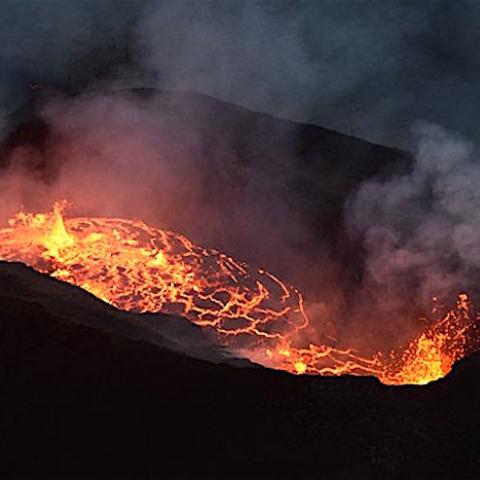
Nēnē raised this young bird from a gosling to fledgling near Pu‘u Pua‘i Overlook/ NPS Photo/David Bouck.
The nēnē, or Hawaiian Goose, is specially adapted to these tropical islands. Today, they have the smallest range of any goose still in existence, and can live successfully without freshwater or ocean habitats. According to the Cornell Lab of Ornithology, "Nënë were once widely distributed among the main Hawaiian islands; although they are capable of interisland flight, their wings are reduced in size, and they do not migrate from the archipelago." Unfortunately, human introduced predators and habitat have decimated their populations, and they depend on protected area - like national parks - to survive.
Only 30 nēnē remained statewide in 1952. Hawai‘i Volcanoes National Park began efforts to recover the imperiled species in the 1970s. The Nēnē Recovery Program continues today, and more than 200 birds thrive in the park from sea level to around 8,000 feet.
The Pu‘u Pua‘i Overlook, parking lot and Devastation Trail opened in April after a four-month temporary closure to protect breeding and nesting nēnē in the area. The temporary closure gave an adult nēnē pair the space they needed to successfully rear their gosling to a fledgling. While the sensitive breeding season for the Hawaiian state bird is winding down, the public is reminded to always stay 60 feet away from nēnē and never give them food. Nēnē that are comfortable with people and handouts are more likely to be killed by vehicles.




 Support Essential Coverage of Essential Places
Support Essential Coverage of Essential Places







Add comment